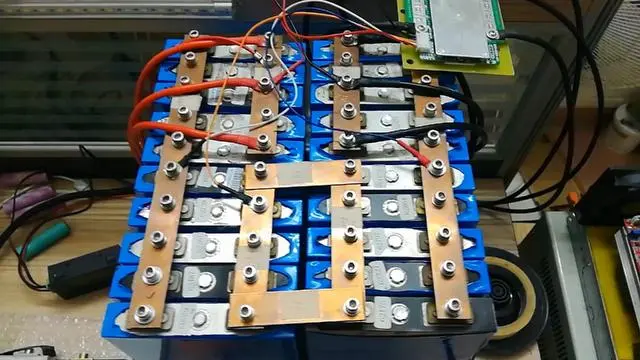 |
Welcome To Evlithium Best Store For Lithium Iron Phosphate (LiFePO4) Battery |
 |
When it comes to lithium-ion batteries, two names tend to dominate the conversation: Lithium Iron Phosphate (LFP) and Nickel Manganese Cobalt (NMC). Both have carved out substantial followings in various industries, but the big question remains—who comes out on top?
Let’s break it down. LFP batteries use lithium iron phosphate as the cathode material, providing a steady voltage of about 3.2V. These batteries are becoming increasingly common in household energy storage systems and solar setups, primarily due to their strong safety profile.
On the other hand, NMC batteries are composed of a blend of nickel, cobalt, and manganese for the cathode, with graphite on the anode side. They typically offer a higher voltage around 3.7V, which makes them a favorite in the electric vehicle (EV) industry—think Tesla and BYD.

Now, let's dive into the specifics that set these two battery types apart.
The cost is usually the first thing people look at. Generally speaking, NMC batteries are more expensive than LFP batteries. This comes down to the raw materials—nickel, cobalt, and manganese are pricier than iron and phosphorus, which are more abundant. However, the manufacturing process for LFP batteries is more complex, making them not exactly cheap either. On average, you can expect NMC batteries to be about 20% more expensive than their LFP counterparts for the same capacity.
Energy density is where NMC batteries shine. They pack more energy per unit of weight, which translates to better performance, especially in applications like EVs where acceleration and range are critical. However, for energy storage applications, LFP batteries often make more sense. They may have lower energy density, but they excel in endurance.
Temperature tolerance varies between the two. NMC batteries are relatively well-balanced, functioning well in both low and high temperatures. LFP batteries, however, handle heat better but struggle in cold conditions. Below 0°C, their performance drops by 10-20%, and at -20°C, they’re only operating at about 60% capacity. This is a significant consideration for those in colder climates.
When it comes to safety, LFP batteries take the crown. Their chemical and structural stability makes them highly resistant to overheating, even under extreme conditions like punctures or high impacts. The worst you might get is some smoke. NMC batteries, while generally safe, are more prone to catching fire or exploding under similar circumstances, particularly at high temperatures.
In terms of durability, LFP batteries are the clear winners. NMC batteries typically last for about 800 cycles, which is sufficient for most high-power applications. However, LFP batteries can easily surpass 3,000 cycles, and with proper care, some can even reach up to 6,000 cycles. This makes them particularly appealing for long-term energy storage solutions.
With proper use, LFP batteries can last over a decade. NMC batteries, primarily used in high-demand scenarios, tend to have a shorter service life of around 2 to 3 years. For those prioritizing longevity, LFP is the way to go.
The answer isn’t black and white. Both LFP and NMC batteries have their strengths and weaknesses. LFP batteries trade off some performance for greater safety and longevity, while NMC batteries offer higher performance at the expense of some safety and lifespan.
The “winner” really depends on your specific needs. If you’re looking for high performance, especially in applications like EVs, NMC is likely your best bet. But if you prioritize longevity and safety—especially for DIY projects or energy storage—LFP batteries are the clear choice.
In the end, whether you go with LFP or NMC, it’s all about matching the battery to your needs. For most everyday uses, especially in energy storage, LFP batteries are hard to beat for their combination of durability and safety.
Edit by paco
All Rights reserved © 2025 Evlithium Limited